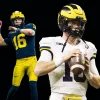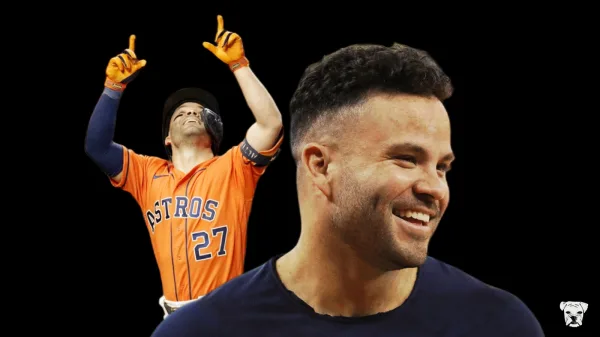The beauty of sport, in its purest form, is that it knows no color. At least on the surface.
However, at one point, the game of basketball at the collegiate level featured more white players than black players. That was until 1966, when Don Haskins, then-head coach of the Texas Western Miners, put together the first all-black starting lineup in NCAA history.
Written by Chris Cleveland and Bettina Gilois, directed by James Gartner, and produced by Jerry Bruckheimer, the 2006 sports drama film Glory Road brought Haskins’ story to light for modern-day sports fans.
Featuring Josh Lucas in the starring role, along with Derek Luke and Jon Voight as part of the supporting cast, Glory Road followed Haskins’ journey from being a small-town high school coach to an NCAA champion.
The Real Glory Road Story

Taking over as head coach of the Miners men’s basketball program in 1961, Haskins slowly set about piecing together a winning team that by the 1965-66 season included seven black players.
Facing a recruiting challenge due to being a small school located in El Paso, Texas, Haskins’ casting net included offering players of color – many of whom were overlooked by bigger, more successful programs – an opportunity to play.
Whereas today nobody would think anything of it, that was an era in which racial integration in college sports was still a major issue.
This was a time in which a “gentlemen’s agreement” was put in place, limiting teams from playing more than two black players at a time.
However, Haskins went against the grain with a simple philosophy: recruit the best talent, regardless of race.
In a time when many programs in the South either went by an unwritten racial quota or just completely avoided recruiting players of color, Haskins saw basketball players for what they were, regardless of their skin tone.
“We weren’t thinking black or white,” he said.
“I was trying to find the best players to come to Texas Western. I had no idea of the impact it would make.”
Although the Miners were the first team to capture an NCAA title with an all-black starting five, in 1962, the Cincinnati Bearcats’ starting unit included four players of color, including Paul Hogue, Tom Thacker, George Wilson, and Tony Yates, with Yates being the only player not to move on to an NBA career.
The following season, Loyola of Chicago repeated the same feat.
While the Miners posted an 18-6 record during Haskins’ first year, they missed out on the postseason tournament.
That would change the following season as the Miners made back-to-back NCAA Tournament appearances before heading to the NIT Tournament during the 1964-65 season.
Posting an amazing 23-1 record during a season filled with racial threats, vandalism, and violence, with their sole defeat coming by way of a two-point loss to Seattle, the Miners were mathematically the best team in the nation during the 1965-66 regular season, finishing with a .966 winning percentage.
Despite their record, the team ranked just third in the nation behind the top-ranked Kentucky Wildcats (27-2, .931) and second-ranked Duke Blue Devils (26-4, .867).
The Miners’ easiest game of the 1966 NCAA Tournament came by way of an 89-74 victory over Oklahoma City. The next two games saw the Miners pull out an overtime and double overtime victory over Cincinnati and Kansas, respectively, before knocking off Utah to reach the championship game.
It was here, in front of a sold-out crowd and a national television audience, that the Miners faced the powerhouse Kentucky Wildcats, coached by Adolph Rupp.
Winners of four NCAA titles (1948, 1949, 1951, and 1958), the Wildcats were a perennial National Championship contender. Amid the Civil Rights Movement, the Miners inadvertently made their own impact on the issue when Haskins’ starting five consisted of all black players taking on Rupp’s team of all white players.
Led by Bobby Joe Hill (Derek Luke), David Lattin (Schin A.S. Kerr), Orsten Artis (Alphonso McAuley), Willie Worsley (Sam Jones III) and Willie Cager (Damaine Radcliff), the Miners carried a 34-31 halftime lead into the locker room at Cole Field House in College Park, Maryland.
With Henry Flournoy (Mehcad Brooks) sidelined due to a first-half injury and Lattin on the bench in foul trouble, the Miners, who played just seven players (all black), managed to maintain and extend their lead in the second half.
Led by Hill’s game-high 20 points and Lattin’s 16-point, 9-rebound effort, the Miners’ 72-65 victory sent shockwaves throughout the country. Against one of the most storied, segregated programs at the time, Texas Western’s upset of the powerhouse Kentucky Wildcats helped to change college basketball forever.
What Happened to the Key Players?

Don Haskins
Following a collegiate basketball playing career at Oklahoma A&M and a short run with the Artesia REA Travelers in the NIBL (National Industrial Basketball League), Don Haskins turned to coaching high school basketball.
Accepting his first collegiate coaching gig with the Miners in 1961, Haskins remained at Texas Western for 38 years, amassing a 719-353 record, 14 March Madness appearances, and the opportunity to help mold several NBA players, including Nate Archibald, Tim Hardaway, and Antonio Davis.
Bobby Joe Hill
The Miners’ star point guard, Bobby Joe Hill, was a 5’11” point guard from Highland Park, Michigan.
Averaging 15 points a game during the Miners’ championship season, Hill led the team both offensively and defensively in the NCAA championship game.
He stayed in El Paso after graduation, married his high school sweetheart, and became an executive for El Paso Natural Gas.
David Lattin
Nicknamed “Big Daddy D”, David Lattin was the only member of the Miners championship team to play in the NBA.
Selected by the San Francisco Warriors with the 10th pick in the 1967 NBA Draft, Lattin played 112 games (2 seasons) in the NBA with the Warriors and Phoenix Suns, before spending the next three in the ABA (Pittsburgh and Memphis).
Adolph Rupp
The “Baron of the Bluegrass” is arguably one of the greatest coaches in NCAA basketball history.
Prior to patrolling the sidelines, Rupp was a high school basketball star in Kansas before moving on to help the Jayhawks win back-to-back Helms National Championships.
Following his college career, Rupp became a high school teacher and coach before taking over as the head man for the Wildcats. During his 41 years with the Wildcats, he won a record 876 games, which currently stands seventh all-time amongst coaches.
Pat Riley
A junior starter for the Kentucky Wildcats, Pat Riley was an award-winning shooting guard for Rupp’s team. Following his final year with the Wildcats, he was selected 7th in the 1967 NBA Draft by the San Diego Rockets.
A nine-year NBA career included a championship with the 1971-72 Lakers. Following his retirement, Riley joined the Lakers’ broadcast team before embarking on a legendary coaching career, which earned him five NBA championships and his name among the greatest coaches in NBA history.
When asked years later about his memories of the game, Riley noted, “When I look at it from the blue-sky standpoint, the best thing happened for society. It was a breakthrough game. It’s really helped open up the doors to a lot of the problems we had back then.”
Fact vs. Fiction: What Hollywood Changed on Screen
Glory Road definitely took some liberties with the true story, and while most of it was done with the interest of getting the point across, there were a number of key facts that should be noted.
- When the Miners traveled to Seattle University, the hostile environment and racial slurs did not actually happen to the extent that the movie portrayed, especially considering the Northwest team was racially diverse. One fan said, “I am black…and I don’t remember hearing any racially motivated booing.”
- The Miners’ game against East Texas State University was shown as having fans littering the Texas Western players with drinks and racial comments. The real game was played in El Paso, not East Texas, so this did not actually take place. Nor the motel scene that had the Miners’ rooms vandalized with racial slurs.
- Viewers are led to believe that Haskins’ first year with the Miners was during the 1965-66 season; however, he was actually hired in 1961.
- The film implies that Texas Western forward Willie Cager missed a fair amount of the historic season due to a heart condition; however, in real life, he suited up for 27 of the Miners’ 29 games.
- The movie inaccurately accounts for the Miners’ games against Iowa and the semi-final game against Kansas. In reality, Texas Western defeated the Hawkeyes 86-68, not on a buzzer-beater. In order for the Miners to advance to the championship game, they needed to beat the Utah Utes, not the Jayhawks.
- Unlike what the movie portrayed, Haskins’s reason for starting an all Black unit was not to make a social statement against racism, but rather because he wanted to have his best players on the floor.
Author Dan Wetzel teamed with Haskins to write their account of how the Miners helped change society, titled Glory Road: My Story of the 1966 NCAA Basketball Championship and How One Team Triumphed Against the Odds and Changed America Forever.
“There’s just no way any other college basketball game had this impact,” Wetzel said.
“Right away, they started taking black players across the South. So you think about the impact that that had on the number of families that all of a sudden their kids could get a college scholarship, and not just basketball, but football and track and baseball, and whatever it was”.
The story of the 1966 Texas Western Miners was a powerful and significant moment in sports history.
While Glory Road offers a Hollywood touch on the tale, the ultimate message comes with the courage, talent, and resilience of a team that defied racial barriers in an era when people judged based on color both inside and outside of the lines.
















